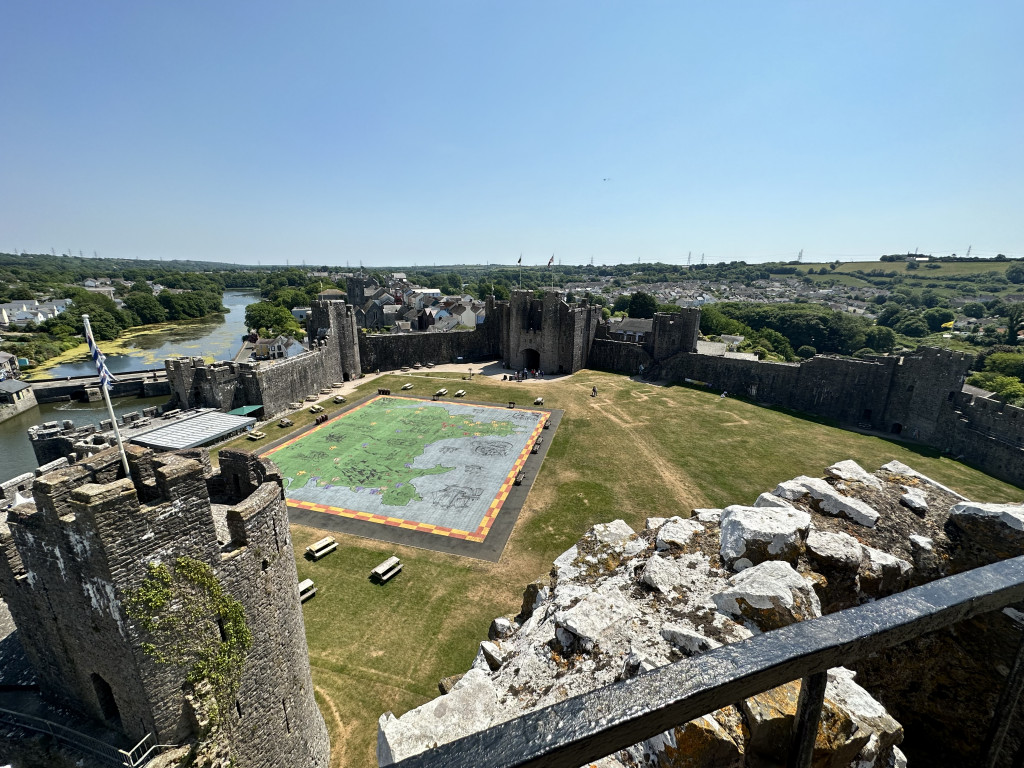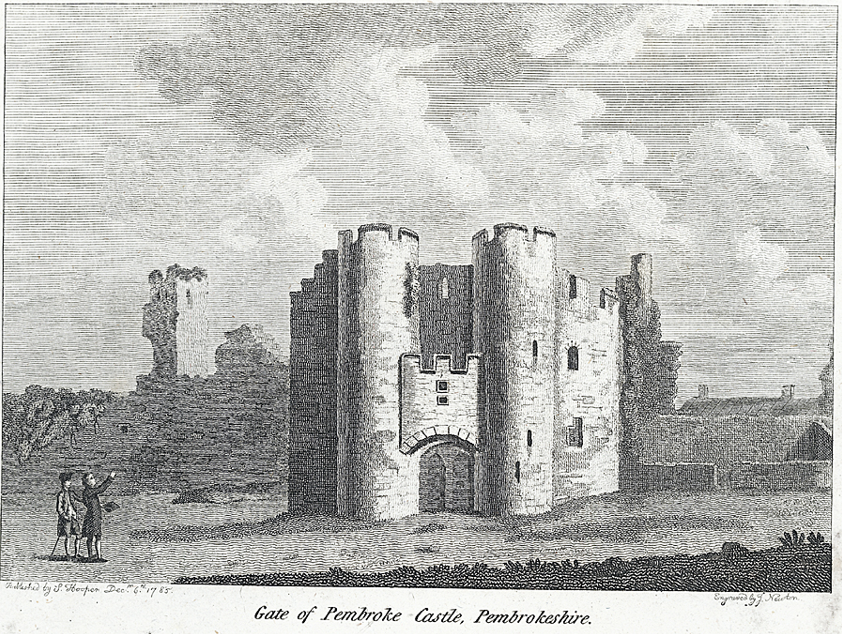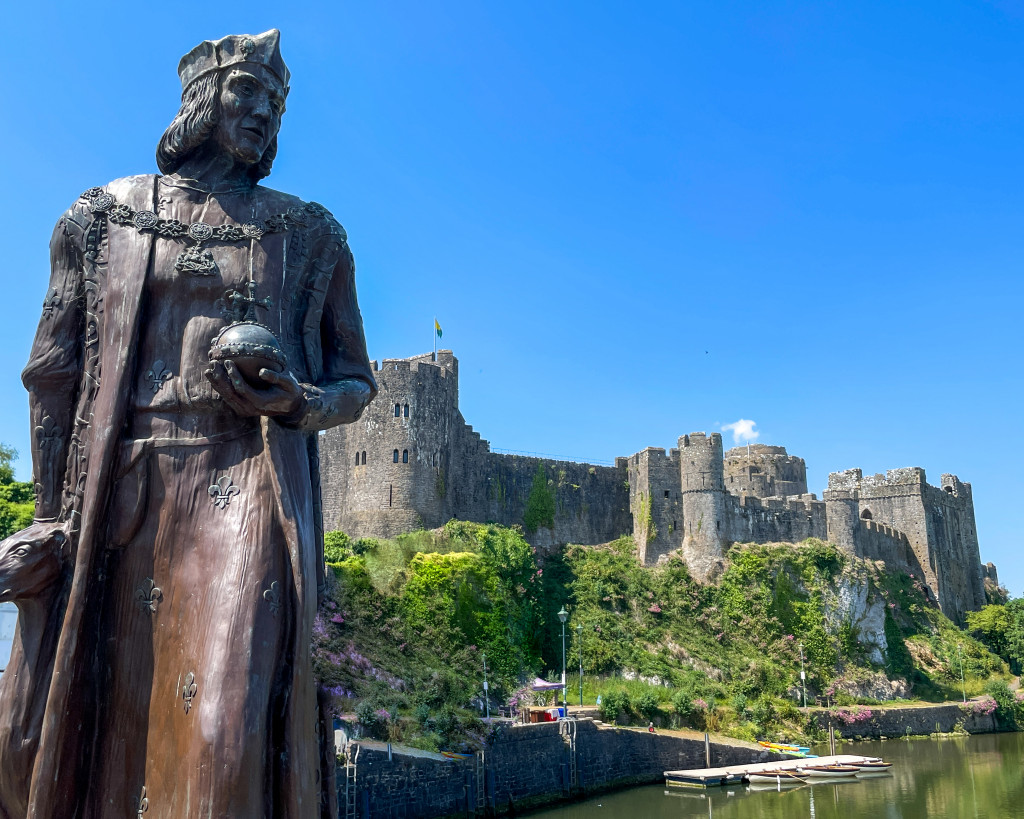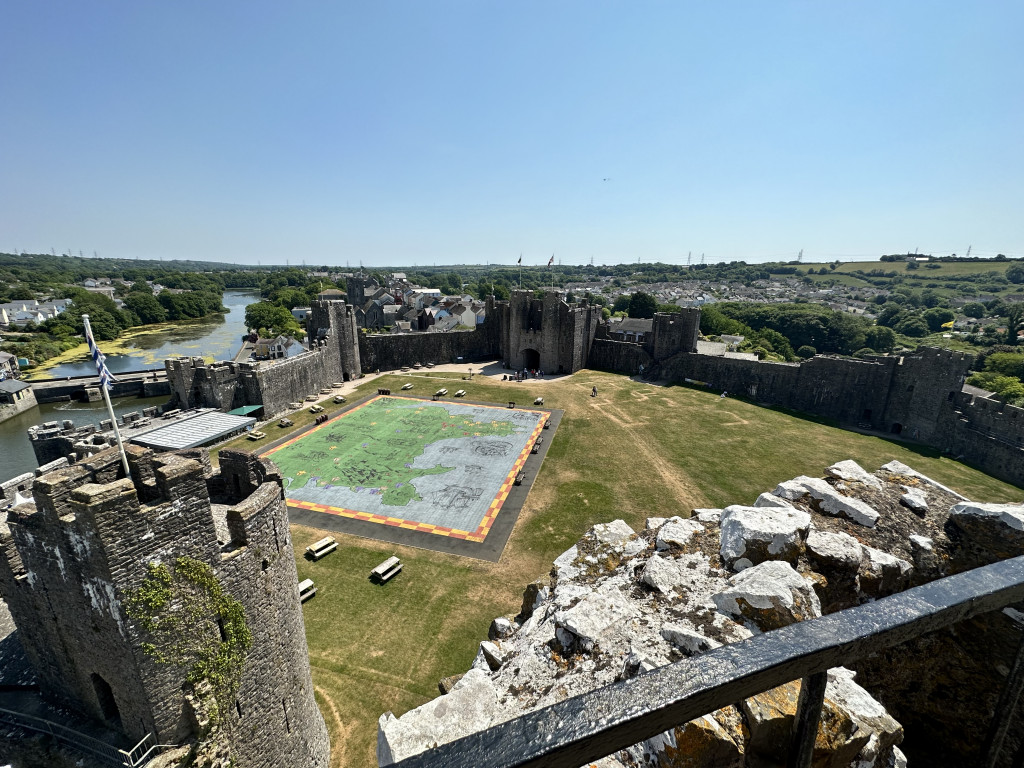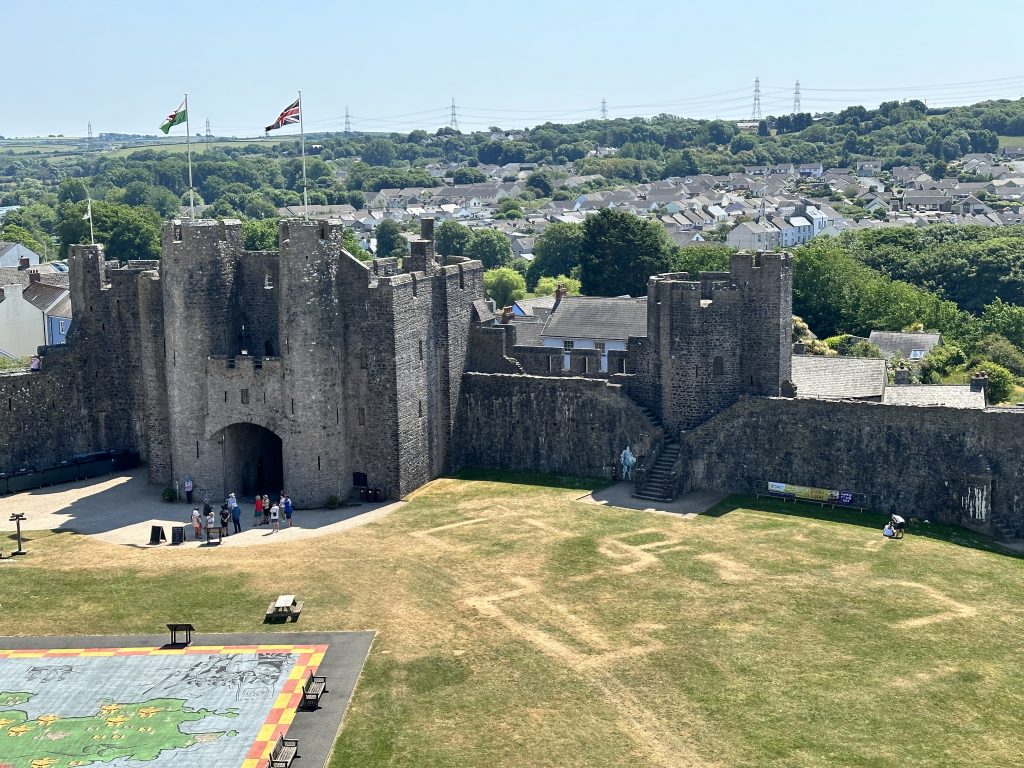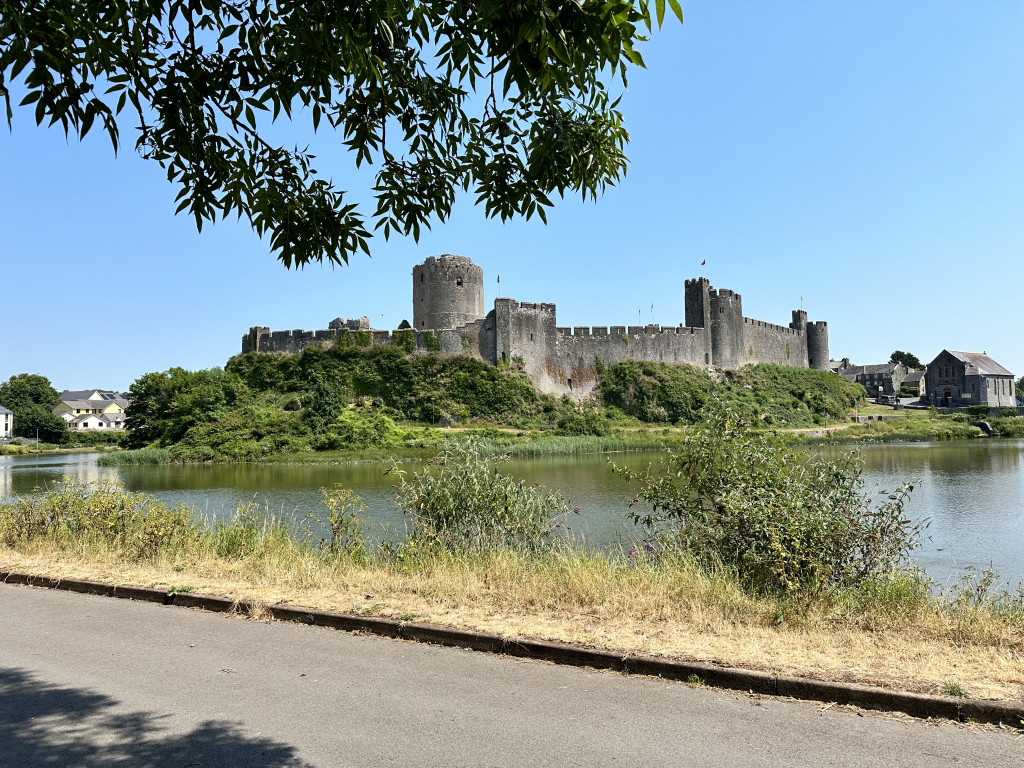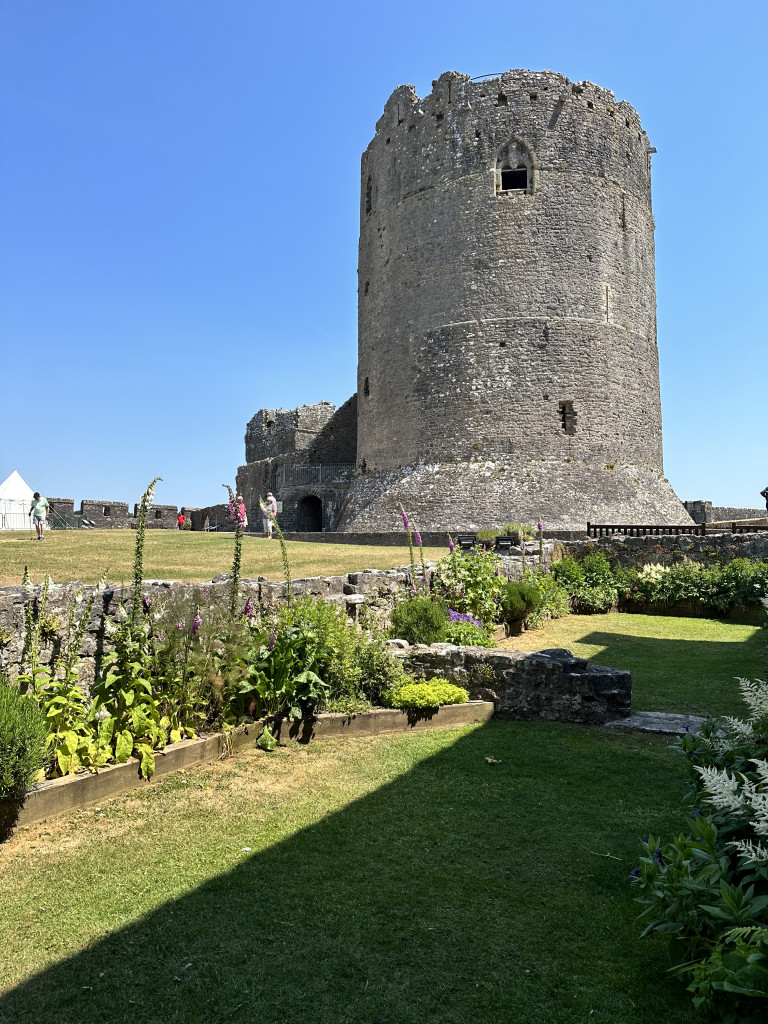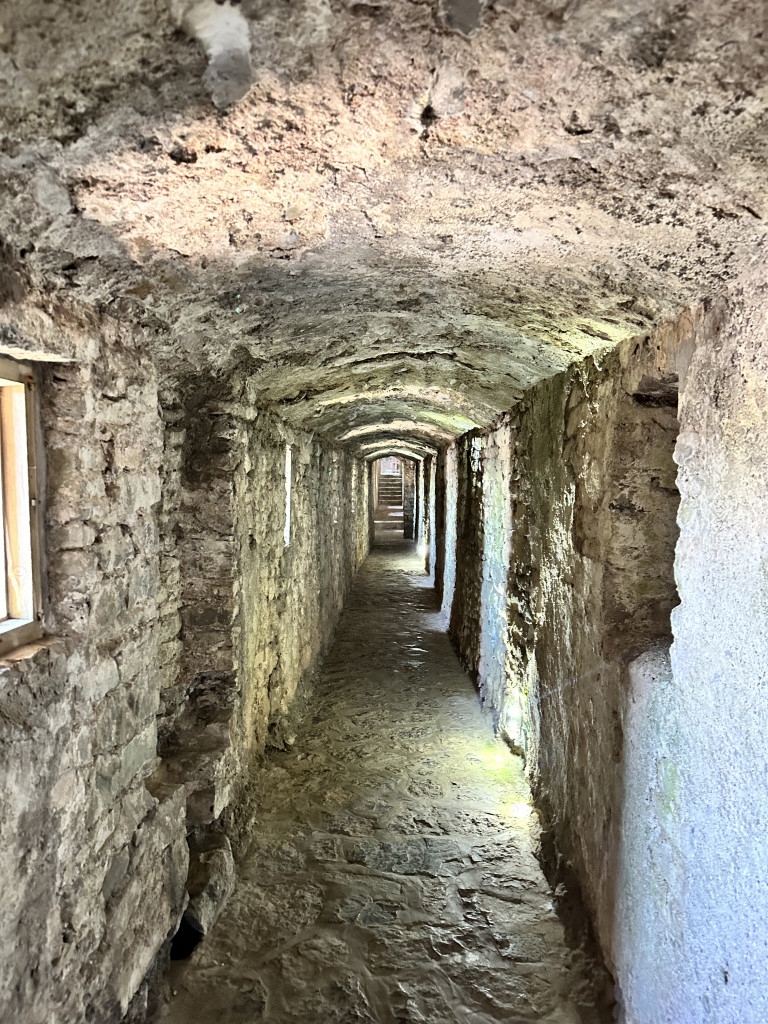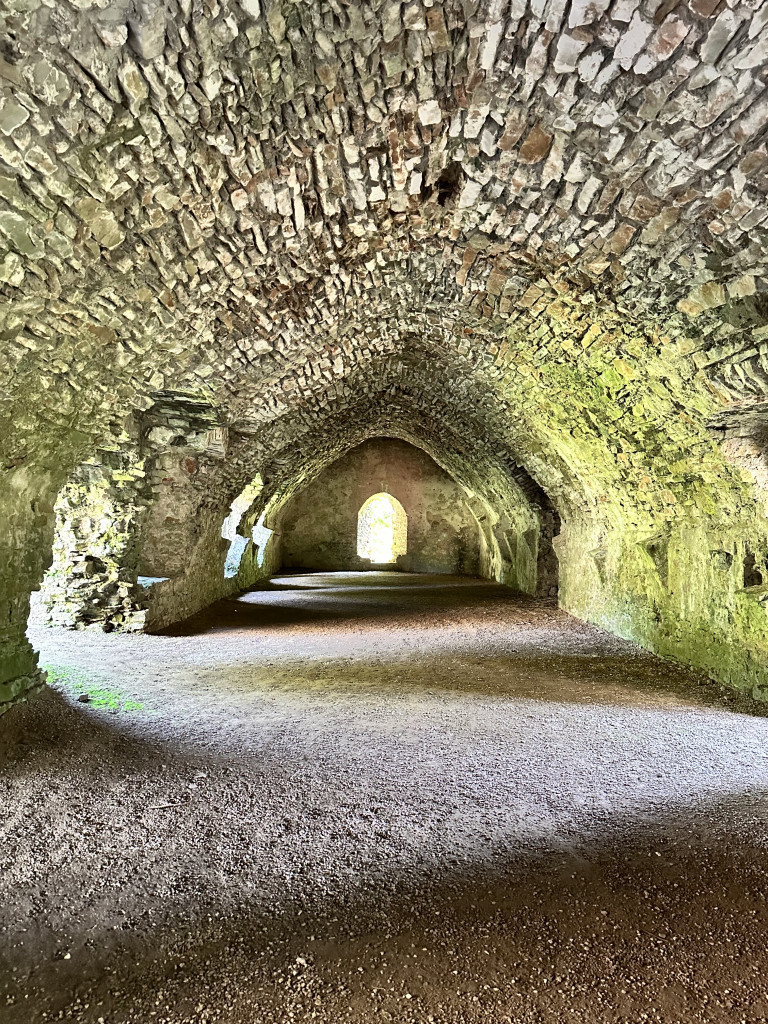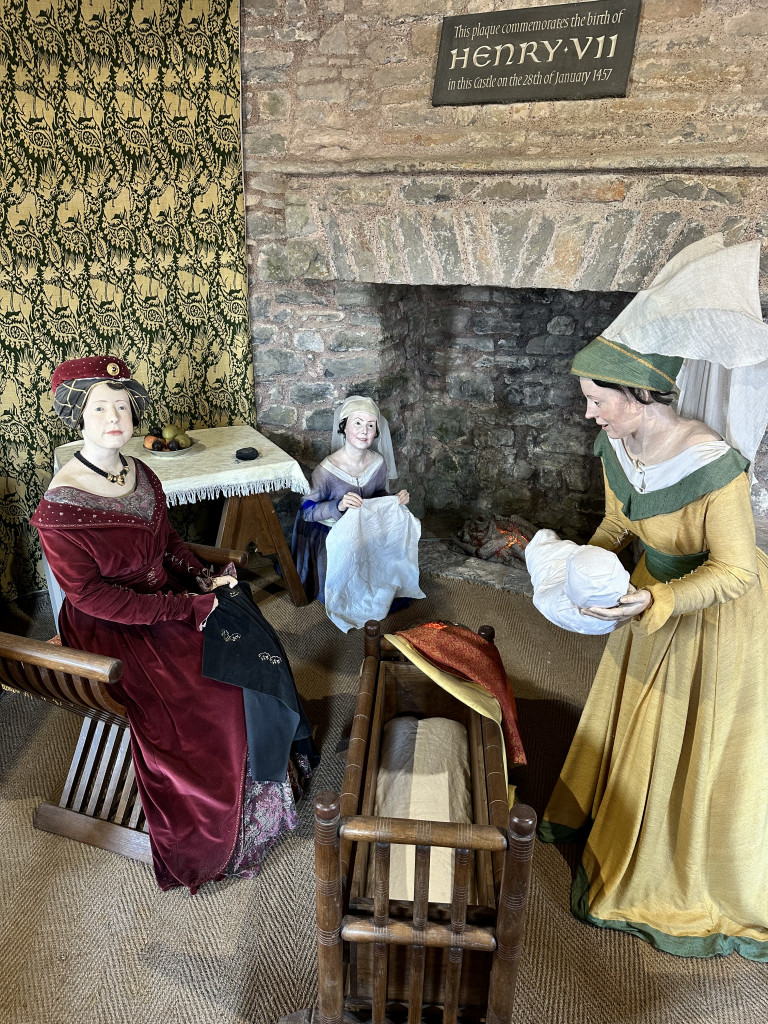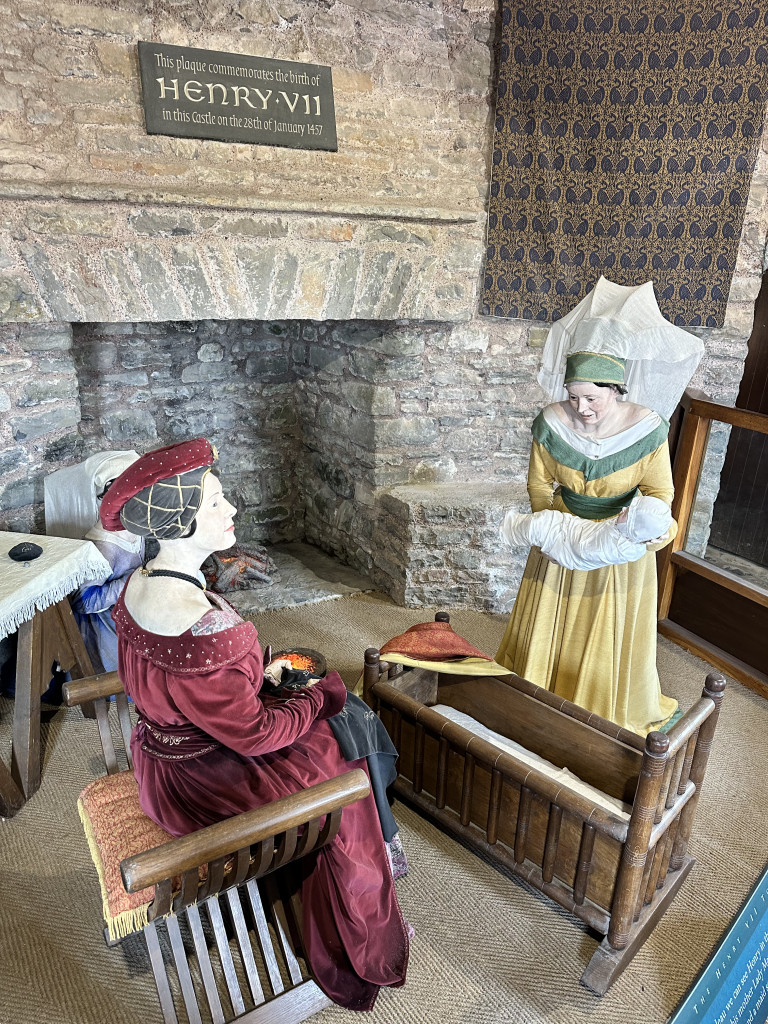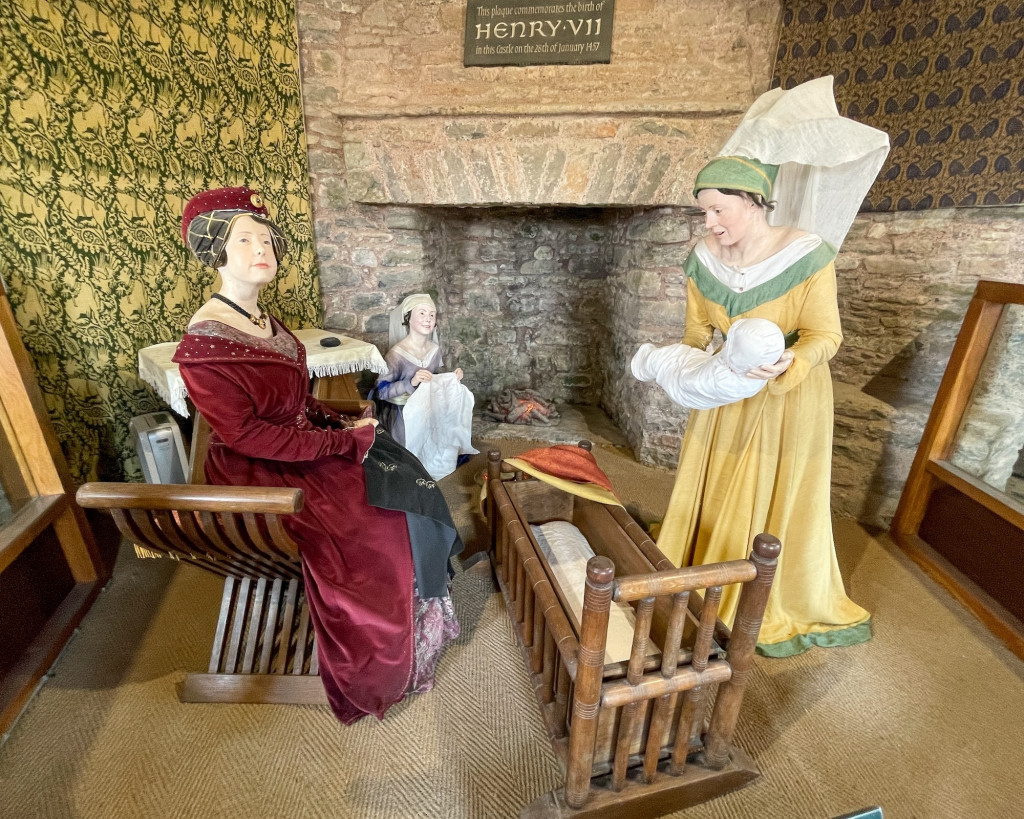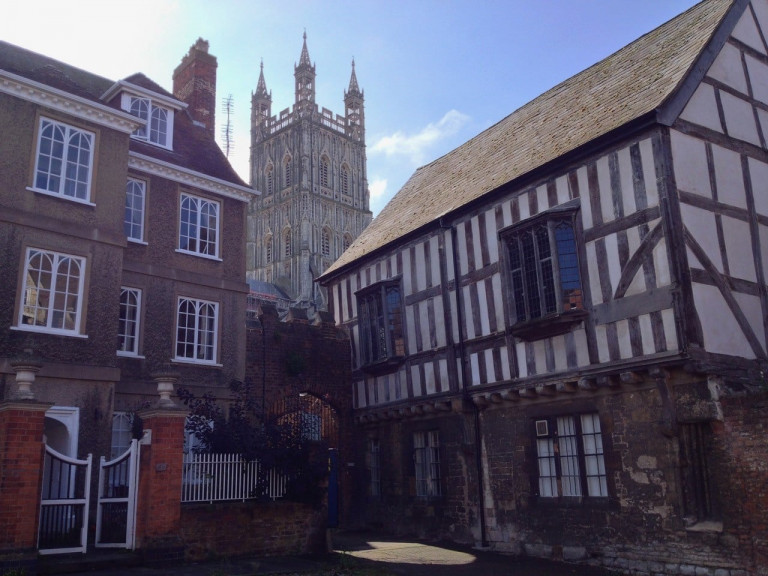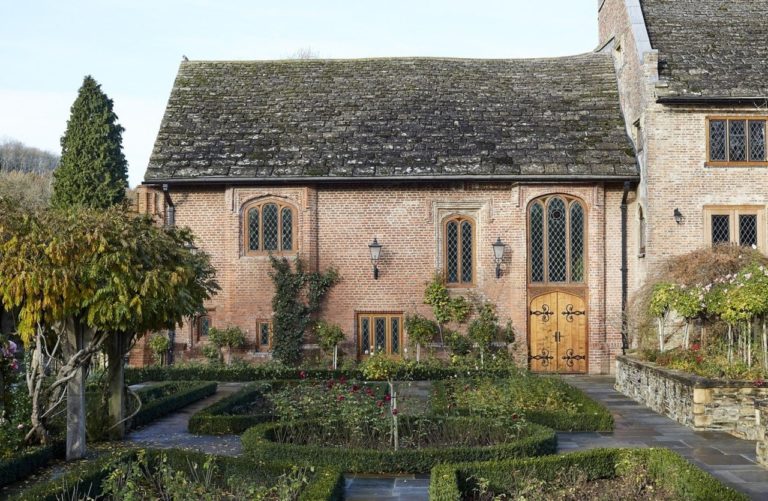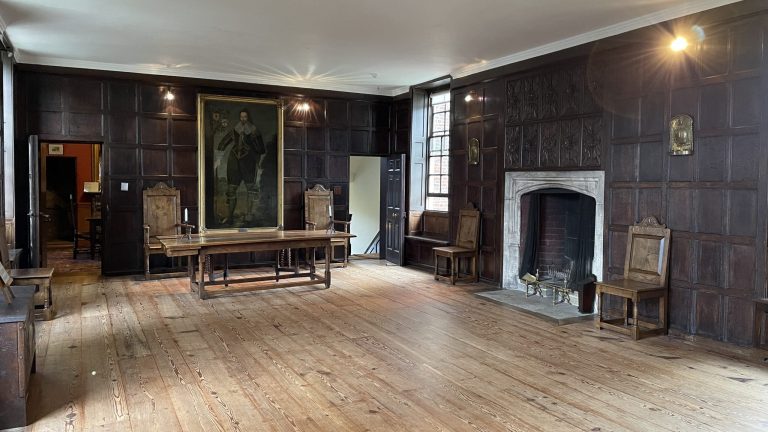Pembroke Castle: Birthplace of Henry VII
Note: This is a show notes page accompanying my on-location podcast at Pembroke Castle, recorded in the summer of 2023.
In this month’s episode, The Tudor History & Travel Show heads to Pembrokeshire in Wales. To commemorate the birth of Henry VII on 28 January 1457, we visit his birthplace: Pembroke Castle.
Pembroke Castle is one of Wales’s largest and best-preserved castles and the only castle in Britain to stand over a natural cavern. The castle was built on a motte and bailey design around 1093 by Roger of Montgomery, a Norman knight and Earl of Shrewsbury. The castle’s construction was part of the comprehensive effort made by the Normans to consolidate control over newly conquered territories in Wales. About a century later, the original wooden fort was rebuilt in austere, impregnable stone by its twelfth-century owner, William Marshal.
Pembroke Castle features a unique cylindrical keep, one of the earliest of its kind in the United Kingdom, which once contained Marshal’s private apartments – you can climb it if you fancy tackling all one hundred or so steps to reach the top!
Sarah and Chris at Pembroke Castle. Images © The Tudor Travel Guide.
Marshal’s fortress consisted of a smaller inner and a vast outer courtyard that remains a truly spectacular sight. The inner courtyard overlooks the river below and contains a complex of buildings, including a great hall and access to Wogan’s Cave. This enormous natural cave may well have proved crucial to Henry Tudor’s survival and escape to Brittany in 1471.
Like the thirteenth-century castles at Caernarfon and Conwy, Pembroke Castle was strategically constructed on a rocky promontory encircled by water. Pembroke River served as a natural defence around the rear of the castle, leaving the most vulnerable part of the castle landward facing. Here, the walls are at their thickest.
Along with the nearly eighty-foot high keep, Pembroke Castle has an impressive gatehouse with a complex barbican and three portcullises. The barbican was a forward defensible structure set in front of the main castle defences or walls. Forming part of the castle gatehouse complex, it gave added strength to a potential point of weakness. The portcullis was a heavy, vertically closing gate with a latticed grille made of wood and/or metal, which slid down grooves inset within each side of the gateway – these grooves are still visible today.
Engraving of the gate of Pembroke castle, Pembrokeshire, James Newton (1748 – 1804), Public domain, via Wikimedia Commons.
An Introduction to Henry VII and Pembroke Castle
Henry VII, born Henry Tudor, had a claim to the throne through his mother, Margaret Beaufort, who was a descendant of John of Gaunt, a son of Edward III. However, his claim was not direct, and the ruling Yorkist king, Richard III, considered his bid for the throne a threat. As a result, he spent much of his early life in exile in Brittany.
In 1483, Richard III ascended to the throne, and Henry saw an opportunity to challenge him. With the support of discontented Yorkist nobles and foreign allies, Henry gathered an army and prepared to return to England.
Henry landed at Mill Bay near Milford Haven, Wales, on August 7, 1485. This location was strategically chosen, affording Henry and his supporters an opportunity to march through Wales, gathering support along the way. Henry’s forces marched eastward through Wales and England. As he moved inland, more nobles joined his cause, including Sir William Stanley.
Statue of Henry VII at Pembroke Castle. Image © The Tudor Travel Guide.
The two armies, one led by Richard III and the other by Henry Tudor, met at Bosworth Field in Leicestershire on August 22 1485. The battle was fiercely contested. As victory hung in the balance, the scales were finally tipped in favour of the Tudor challenger when Sir William Stanley (who was married to Margaret Beaufort) commanded his forces to enter the fray fighting for his stepson. This turned the tide of the battle. Richard III was killed in the melee, and his defeat marked the end of the Plantagenet dynasty.
Henry VII emerged victorious at the Battle of Bosworth. He was crowned on the battlefield, marking the beginning of the Tudor dynasty. The Battle of Bosworth effectively ended The Wars of the Roses and brought about relative stability in England under the Tudor monarchy. After marrying Elizabeth of York on 18 January 1486, their first son, Arthur, was born on 20 September 1486. Elizabeth of York was crowned queen on 25 November 1487.
Although Henry VII never returned to his birthplace, Pembroke Castle symbolised Tudor’s Welsh origins. His connection to the castle was deeply rooted, and Henry invested in its restoration and improvement, turning Pembroke Castle into a comfortable residence.
In this podcast, I’m joined by Gareth Mills, a tour guide at Pembroke Castle, who shows us around this incredible building. A gallery of images is below.
Pembroke Castle Image Gallery
Pembroke Castle is home to the largest map of Wales in the world, and the largest painting in the UK. The map demonstrates the location of every important castle and religious landmark in Wales.
Looking over the castle’s outer ward/courtyard; Looking towards the gatehouse and tower (to its right) where Henry Tudor is traditionally said to have been born. Images © The Tudor Travel Guide.
The castle’s central keep. Its narrow spiral stairs narrow are built in a clock-wise direction. A defensive technique, this makes it harder for right-handed swordsmen coming to attack to draw their sword – they would have to use their weaker left hand and can only enter one by one. Image © The Tudor Travel Guide.
‘The Wogan’ is a vast natural cavern deep in the limestone rock the castle. The Normans constructed a spiral staircase from the cavern to the castle above, and today, you can still reach the cavern directly from the castle via the 55 step staircase.
Wogan’s cave and the under croft beneath the Bishop’s privy apartments. Images © The Tudor Travel Guide.
Images © The Tudor Travel Guide.
Useful Links
Visiting information for Pembroke Castle is here.
My itinerary for a weekend in Tudor Pembrokeshire is here.
If you have enjoyed touching the past through this blog, you can join my membership, The Ultimate Guide to Exploring Tudor England, which brings together all my best, most comprehensive content in one place: blogs, videos, live chat, progresses, maps, itineraries, travel information and podcasts.


